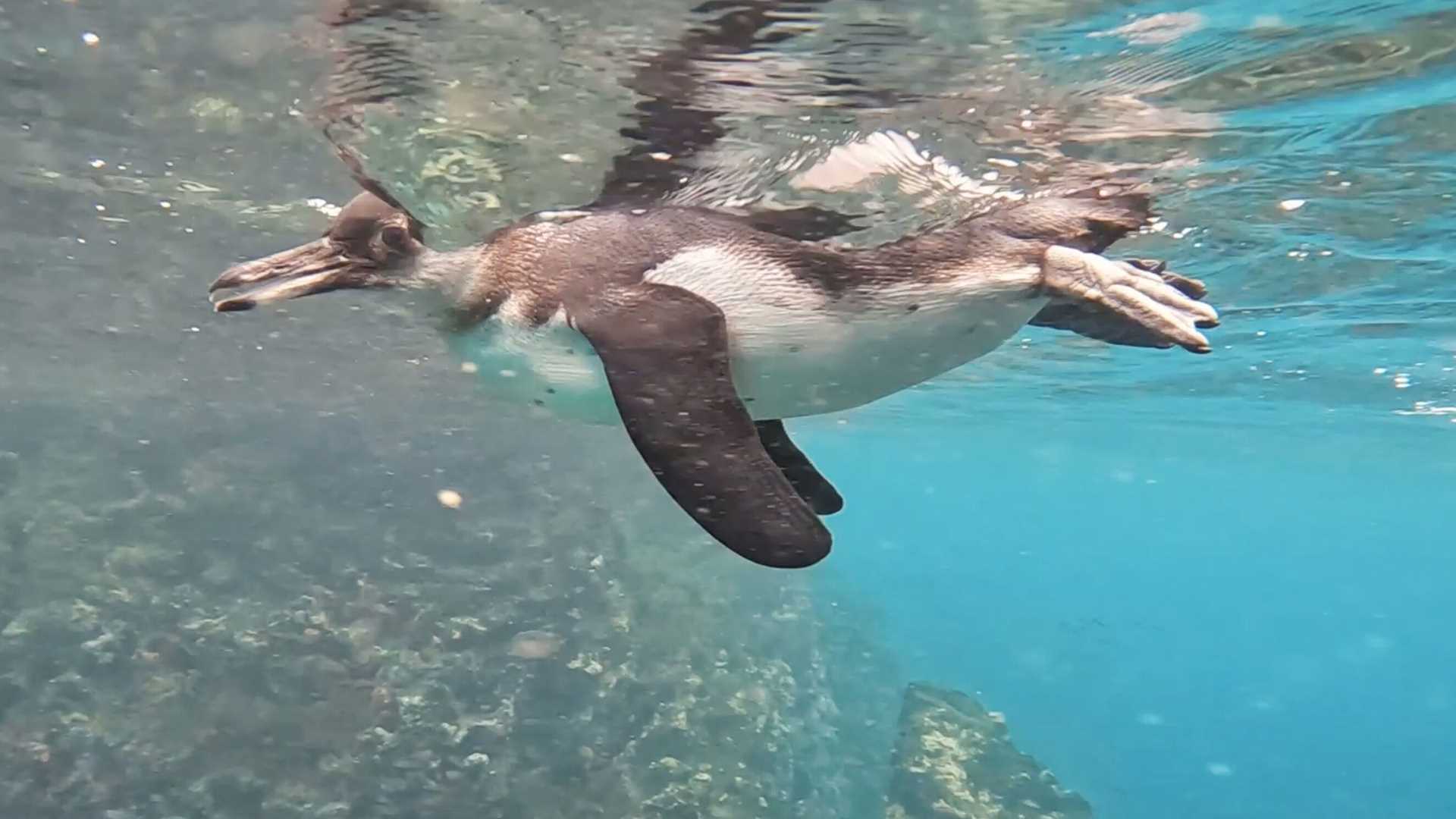Guests onboard National Geographic Endeavour II spent the day exploring Bartolome Island and Sombrero Chino. We kicked off our day with a fast-paced walk before breakfast to a beautiful viewpoint at Bartolome Island. Along the way, we had the opportunity to observe interesting geological formations, including volcanic ash, spatter cones, and cinder cones. This island is quite special because a variety of geological formations is found within a relatively small area. At Bartolome Island, there was not a great deal of wildlife on the trail. However, we had the opportunity to observe some interesting pioneer plants such as lava cactus and tequila. These plants species appeared early on in the succession of the islands. Some guests chose to take a Zodiac ride along the coast of Bartolome, where we observed several Galapagos penguins hunting and some curious Galapagos sea lions.
After breakfast, guests had the chance to enjoy a beautiful beach on Bartolome Island and snorkel from the coast. Snorkelers swam with several Galapagos penguins, whitetip reef sharks, and many species of tropical fish. There was an opportunity for deep water snorkeling after returning from the beach. Guests were delighted to find more Galapagos penguins hunting; many guests enjoyed close encounters with these rare birds. Guests also had the option to enjoy the glass-bottom boat. Upon returning to the ship, we enjoyed a special Galapagos lunch, with a variety of local foods.
After lunch, guests had a third opportunity to snorkel at Sombrero Chino. The wildlife was incredible; we observed many sharks, octopuses, garden eels, and filefish. The colors at this site are beautiful against the white sandy bottom. Sombrero Chino is a massive spatter cone.
Photo caption and photographer: A Galapagos penguin swims past as we snorkel at Bartolome Island. This species is the second smallest penguin in the world. When the ancestral species diverged from the Humboldt penguin, they shrunk in size to more easily dissipate heat in their new home on the equator. These are the only penguins in the world to inhabit the Northern Hemisphere. Photo by Alexandra Widman







